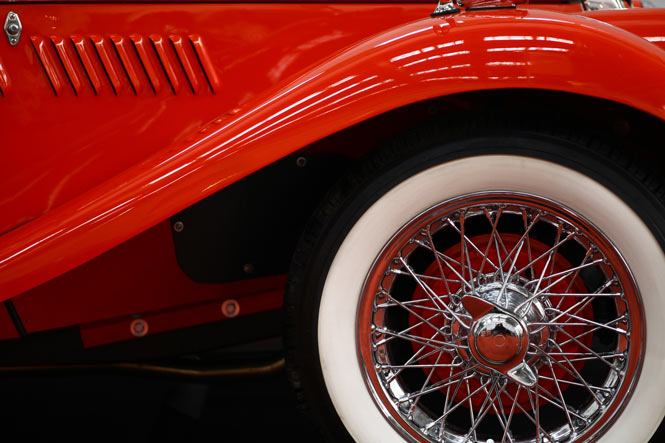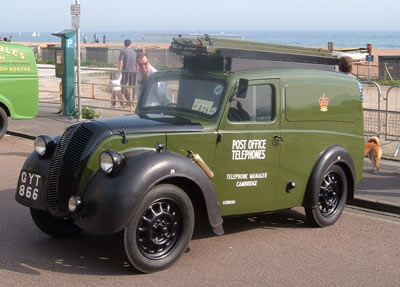It was very familiar to Australian car owners in the 50s and 60s, particularly if they had to take the tyre off the rim to repair a puncture.

A tyre with an inner tube was universal in the days when car tyres were made by the bias-ply method.
It was so called because the layers of rubberised cords were embedded in the rubber in alternating diagonal layers at a 55-degree angle to the rim.
But that technology was replaced by the radial method of tyre construction which are steel-belted with the ply cords radiating at 90-degrees to the wheel rim.
Radial tyres have many advantages including longer tread life, better steering characteristics and improved fuel economy, but they also cost 45% more to make.
But the major advantage for all those home mechanics of the 50s and 60s is that they are tubeless.

photo by Les Chatfield
“1944 MORRIS Z Series G.P.O. telephone lineman’s van”
GDT’s Trevor Bayley well remembers repairing punctures in the tyres of his first vehicle, a 1948 Morris 8 van that had started off its life working for the British Post Office.
“There was nothing better on a dark night in the freezing rain fixing a flat on the side of a Dorset road,” says Trevor.
But for GDT today, the distinction between bias-ply or radial ply tyres is immaterial as we can recycle every tyre into valuable oil, carbon and steel and stop the mounting piles of unwanted end of tyres that are being dumped in the bush, rivers and landfill around the world.



